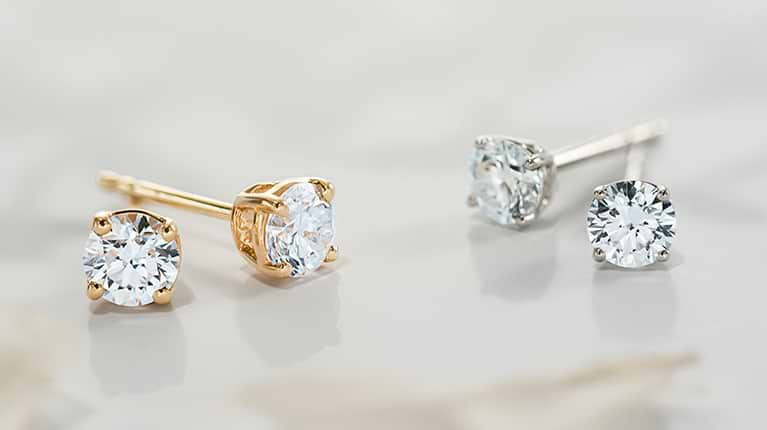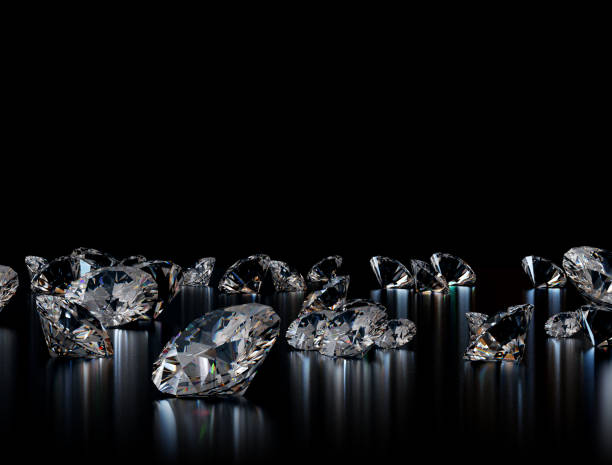Introduction
In the world of diamonds, two distinct categories have emerged: mined diamonds, formed naturally over millions of years beneath the Earth’s surface, and lab-grown diamonds, meticulously crafted in controlled environments mined or lab diamonds. Understanding the differences between these options is crucial for anyone seeking the perfect gemstone.
Understanding Mined Diamonds
What are Mined Diamonds?
Mined diamonds are naturally occurring gemstones formed deep within the Earth under high pressure and temperature conditions.
Formation Process
Mined diamonds begin as carbon atoms that crystallize under extreme pressure and heat over billions of years.
Characteristics
They are known for their rarity, unique imperfections (inclusions), and natural beauty that reflects their geological journey.
Lab-Grown Diamonds
What are Lab-Grown Diamonds?
Lab-grown diamonds, on the other hand, are created through technological processes that simulate the natural diamond-growing environment.
Growth Process
These diamonds are cultivated using high-pressure, high-temperature (HPHT) or chemical vapor deposition (CVD) methods to replicate natural diamond growth.
Quality and Properties
They possess identical physical, chemical, and optical properties to mined diamonds, often with fewer imperfections due to controlled growth conditions.
Comparison Factors
When deciding between mined and lab-grown diamonds, several factors come into play, each influencing the choice differently.
Environmental Impact
Mined diamonds involve significant environmental disruption through mining operations, whereas lab-grown diamonds have a lower ecological footprint.
Cost
Traditionally, mined diamonds are more expensive due to their rarity and mining costs, whereas lab-grown diamonds offer a more cost-effective alternative.
Ethical Considerations
Lab-grown diamonds are often considered ethically superior as they avoid the social issues sometimes associated with diamond mining.
Popularity and Market Trends
Consumer preferences are evolving, with increasing acceptance and demand for lab-grown diamonds driven by their ethical and environmental benefits.
Consumer Preferences
Many consumers are opting for lab-grown diamonds due to their ethical stance and the ability to trace their origins.
Industry Insights
The diamond industry is adapting to accommodate the growing market for lab-grown diamonds, reflecting shifting consumer values.Lab diamonds, also known as synthetic or cultured diamonds, are created through advanced technological processes that replicate the natural conditions under which diamonds form in the Earth’s mantle. These diamonds are chemically and physically identical to mined diamonds, consisting of carbon atoms arranged in the crystal structure characteristic of diamonds.
Conclusion
In conclusion, whether you choose a mined diamond steeped in natural history or a lab-grown diamond crafted with precision, both options offer unique advantages. Your decision may hinge on factors such as environmental impact, cost considerations, and ethical beliefs. Ultimately, the perfect diamond is one that aligns with your values and preferences, ensuring a timeless symbol of love and beauty.
Choosing between mined and lab-grown diamonds involves considering various aspects beyond their physical appearance and price tag. Mined diamonds, with their deep-seated rarity and natural beauty, hold a historical allure that resonates with many. However, the environmental toll of mining and potential ethical concerns associated with sourcing can sway conscientious consumers toward lab-grown alternatives. These diamonds, cultivated in controlled environments with minimal ecological impact, offer a sustainable and often more affordable choice without compromising on brilliance or durability.






More Stories
Diamond Engagement Rings: A Beautiful Choice for Modern Couples
Platinum vs Gold Diamond Rings: Which Metal Reigns Supreme?
The Rise of Lab-Grown Diamonds in Malaysia